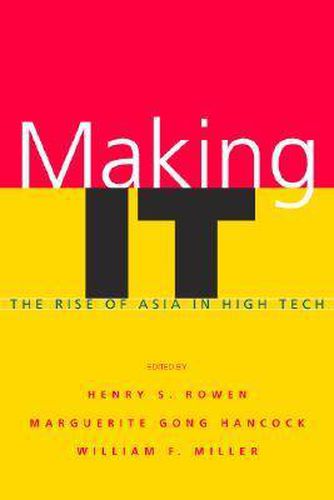Readings Newsletter
Become a Readings Member to make your shopping experience even easier.
Sign in or sign up for free!
You’re not far away from qualifying for FREE standard shipping within Australia
You’ve qualified for FREE standard shipping within Australia
The cart is loading…






In 2003, consumption of IT goods worldwide was $1.5 trillion. Asia represented twenty percent of this total. Even more telling, Asia produced about forty percent of these goods. The continued rise of Asian IT innovation will pose a challenge to the eminence of traditional IT centers, notably Silicon Valley.
Making IT examines the causes as well as the major consequences of the dramatic rise of Asia in this industry. The book systematically analyzes each country’s policies and results, on both a national level and, more importantly, in the innovation regions that have developed in each country: Japan’s excellence in technology and manufacturing skills; Bangalore, India’s late start and sudden explosion; Taiwan’s Hsinchu Science-based Park’s entrepreneurship and steady growth; Korea’s Teheren Valley’s impressive development of large companies; Singapore’s initial reliance on multinational firms and its more recent switch to a home-developed strategy; and China’s Zhongguancun Science Park’s encouragement of investment from foreign firms while also promoting a domestic IT industry.
The book outlines the difficulties in the IT industry, including Japan’s tendency to keep out most foreign firms and China’s poor protection of intellectual property. Developed by the team that brought readers The Silicon Valley Edge, Making IT analyzes why this region has an advantage in this industry, the similarities and differences in the countries’ strategies, why companies have clustered in specific localities, and most important, what will be changing in the coming years.
Making IT should leave no doubt that the United States and other countries competing in the global economy will face enormous challenges-and opportunities-responding to the rise of an innovative Asia.
$9.00 standard shipping within Australia
FREE standard shipping within Australia for orders over $100.00
Express & International shipping calculated at checkout
In 2003, consumption of IT goods worldwide was $1.5 trillion. Asia represented twenty percent of this total. Even more telling, Asia produced about forty percent of these goods. The continued rise of Asian IT innovation will pose a challenge to the eminence of traditional IT centers, notably Silicon Valley.
Making IT examines the causes as well as the major consequences of the dramatic rise of Asia in this industry. The book systematically analyzes each country’s policies and results, on both a national level and, more importantly, in the innovation regions that have developed in each country: Japan’s excellence in technology and manufacturing skills; Bangalore, India’s late start and sudden explosion; Taiwan’s Hsinchu Science-based Park’s entrepreneurship and steady growth; Korea’s Teheren Valley’s impressive development of large companies; Singapore’s initial reliance on multinational firms and its more recent switch to a home-developed strategy; and China’s Zhongguancun Science Park’s encouragement of investment from foreign firms while also promoting a domestic IT industry.
The book outlines the difficulties in the IT industry, including Japan’s tendency to keep out most foreign firms and China’s poor protection of intellectual property. Developed by the team that brought readers The Silicon Valley Edge, Making IT analyzes why this region has an advantage in this industry, the similarities and differences in the countries’ strategies, why companies have clustered in specific localities, and most important, what will be changing in the coming years.
Making IT should leave no doubt that the United States and other countries competing in the global economy will face enormous challenges-and opportunities-responding to the rise of an innovative Asia.